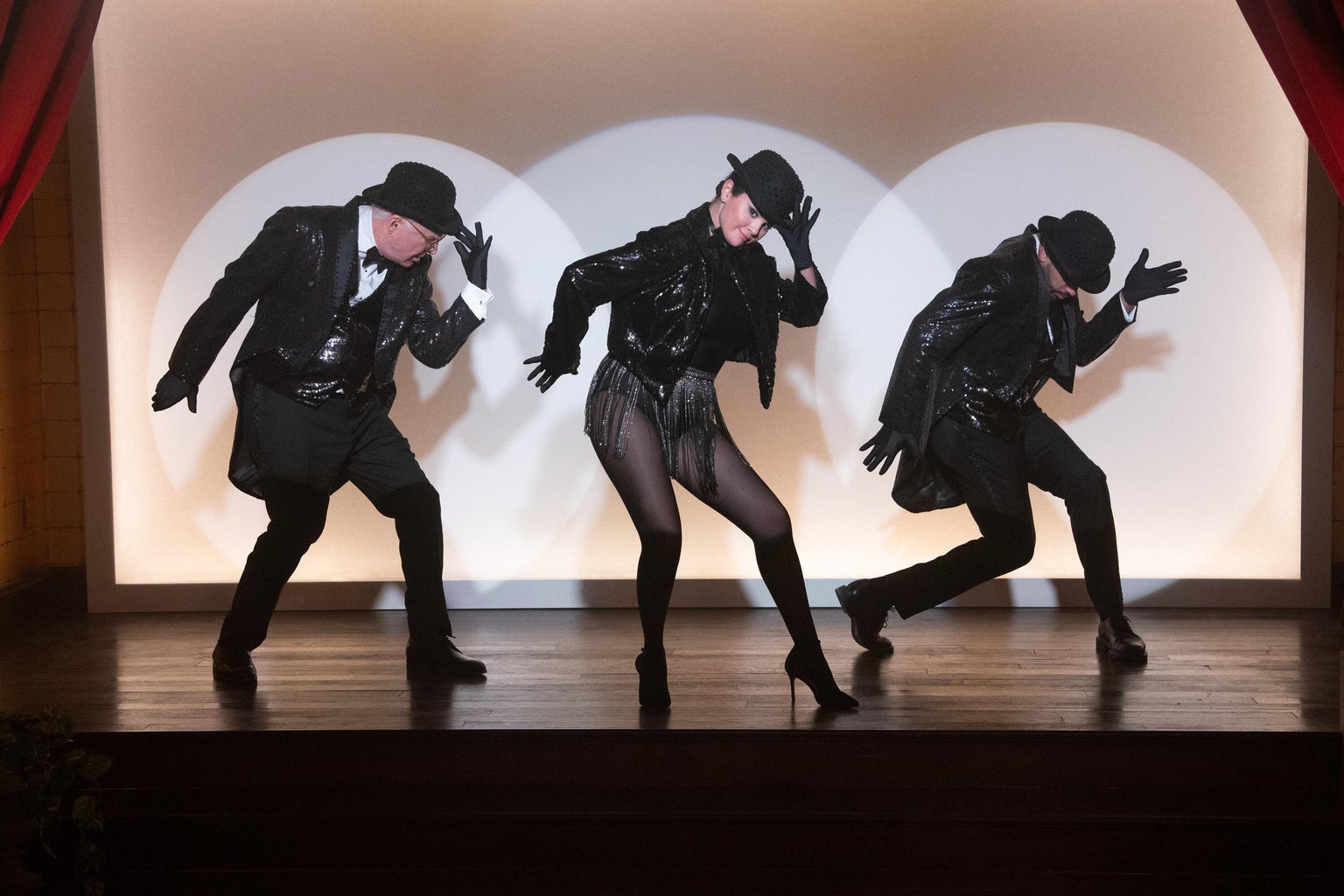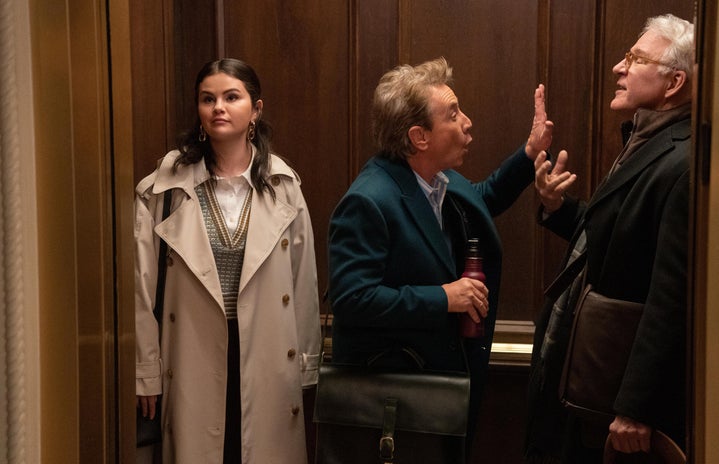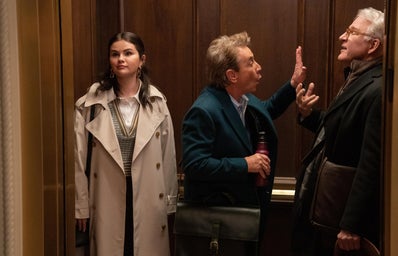Ever since its premiere in August 2021, Only Murders in The Building has captivated audiences with its distinct and fundamentally prominent sense of camp and coziness, capturing and sustaining our attention with an astonishingly comedic intergenerational group dynamic. It is a show that, since the very origin of its premiere, has both reminded us of and justified the comfort of an era in which television entertained audiences, not with gratuitous sex and irreprehensible insolate young adults, but instead with kindness, compassion, and a sense of thoughtful contemplation. With fully fleshed-out intelligence, concepts, and processes, it almost exclusively, and unfortunately, explores uncharted territories for this current generation of television and cinematic creators.
Rather than, by necessity, continue to console myself with the number of television environments that traded in responsibility and reality for raunch—creating a generation high on TikTok, drugs, alcohol, and far-fetched fornication—I was now able to view a show that felt true to my values, my personhood, and how I both lived my life, as well as how I dreamed for an entire world to live. Within this universe of antique mystique, and murders that dredged up the bygone, I felt propelled back to an era with which I felt nothing, but resonation. Each episode felt like annihilating the haste of modernity, for the graduality of the past, simultaneously stuck between the past and the present, finding joy in what was in the now. It was a hint of time traveling that I needed to find myself in enjoyment amidst the foolishness of my generation, an obvious fact that I tried hard to forget, or ignore, but a fact that, nonetheless, danced around the edges of my intellectual sphere each day.

Yet, the dynamic of the central characters is what formulates the show into a historical now, erasing the obsoleteness of antiquity: Mabel, the trendy-but-classic, lackadaisical, spiritually-generational transplant millennial; Charles, the cautious, fedora-ed, board game, true crime aficionado grandfather type; and Oliver, the expressively-flamboyant fiasco of stage and theatre. All at once, the three main characters create an alternate reality, probing the lines of relevancy between then and now, a timeless dynamic of the comedy of the past colliding with the present. Whenever these characters interact within the vicinity of each other, it annihilates generational separation, defying the lines of who is friends with whom.
For those of us, like myself, who do not find a space for ourselves amidst the glow of modernity’s materialization, Mabel, Charles, and Oliver create and open up a space for those of us who feel split between eras—often at odds with our own. Rather than living and connecting in generational exclusivity, the central characters forage a fuzzy and friendly universe in the gray, between shades of lives and ages. Their friendship, in itself, embraces and thrives upon the intergenerational, proving the permanence of pals comes from exploring and espousing nonlinearality. Instead, their group mentality and connection are based on the subjects that hold substance, such as hobbies, interests, and values, ignoring both age and time, trading in the inconsequential for the consequential. In contrast to the questionable adoption of youthful abandon and recklessness commonly embedded in Gen Z television, Only Murders in The Building champions the thoughtfulness, slowness, authenticity, and longevity of relationships that are adult; A friendship that ages gracefully like a fine bottle of wine. The revered recklessness of our generation’s youth is a representation that I feel does anything but represent me. Instead, this show ennobles maturity, the adult, creating an ample space for those of us who do not find our identity roaming admist the aforementioned recklessness. There is no jolt out of rock bottom, out of glorified crisis. Instead, the simple act of existing in the mundanity of every day far out sustains one, more than any laugh shared over a keg or a DM sent over Instagram.
The very presence of the intergenerational between the central characters both appeals to me, and allows me to feel seen, despite my multiplicity of generational social disconnections. Although millennial, Mabel’s metaphorical drift towards boomer island reinforces the power of connecting with what has come before oneself. The intergenerational thrills a viewer, such as myself, with its ability to establish a connection that thrives on the missed connections, missteps, gaps, and cultural awakenings of the anecdotal, colloquialisms causing a surge into a realm of unrelenting comedy. It is the misinterpretations of references that make the characters penetrate further into interrogation, asking questions, thus understanding the person opposite just that much better. The intergenerational dynamic dismantles social linearity, instead presenting a social society of rhizomatics, connections abounding any and everywhere. Such is the evocation of effort’s results of connection, an illustration of how fundamentally important connection feeds off how much one puts in. If we feel a bit lackluster in what we have and who we have, perhaps, we haven’t, unlike amidst the group’s dynamic, been pushed to feel confused and interrogated. Moreover, the group’s ability to consistently solve crimes, as an era diverse group, perpetuates a message of solution and creation spanning that defys population. It offers an immediate elucidation for tweaking and transforming a world currently stuck, and slow in solutions. Truly, as these characters show us, episode after episode, the fluidity of the intergenerational upends our connections, as well as our approaches, jolting the world out of typicality and into the motion of unconventional, radical potential.

Still, the interplay of generations forces the viewer to call into question our definitions of friendship and connection, offering us a cache of companionship that is as unorthodox as it is fulfilling. Perhaps it is modernity’s normalization of conceptual social rigidity that binds us to the unfulfilling, to the vanity of the vogue, the cattiness of consumerism, an age of ageism, that we find ourselves more disconnected than connected. Playing between eras breaks the distasteful and empty rigidity that coheres us to the misery of the now, allowing us to fulfill the desires of connection that we hold. Then, we can find a connection where it aligns with our truth, our values, and our authenticity, rather than searching for it in a universe in which we are forced to settle for normative, run-of-the-mill alignment, rather than an alignment within the simplicity of our central universe.
Yet, there is great hope for us all, proven by Mabel, Charles, and Oliver, who with their intergenerational confusion, comfortingly-clashy aesthetics, and backgrounds, storm the viewer with pleas to befriend the boomer, the unexpected, to live and exist where the crossover happens, and multiplicity is the answer to our ailments, wherein our search for relatability derives from the seemingly unrelatable, the gargantuan gaps of generation. Although none of us are all too sure who we may be, we all desire and deserve the kind of friendships and connections that sustain us, as well as hold onto a universe, a mindset, that forces us to slow down, to break our rigidity, to revel in the rhizomatic. When we approach our connections, our lives, loves, and interests, abandoning rigidity for fluidity, the holistic expands the notion, the possibility of our desires and dreams coming fully to our fruition. As soon as we relinquish the starkness of conventionality, rigidity transforms into endless possibility. As Shakespeare once said, “all the world’s a stage and all the men and women merely players”. To expand upon Shakespeare himself, the whole world truly feels like a stage on which we are forced to act, wasting time acting out existence, rather than living, succumbing with enthusiasm to the unconventional. To take a hint from the infamous Only Murders in The Building regular, Oliver Putnam says “f*ck the theatre,” and instead, let’s mix and match, weave, and reroute.

